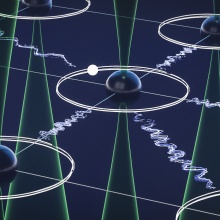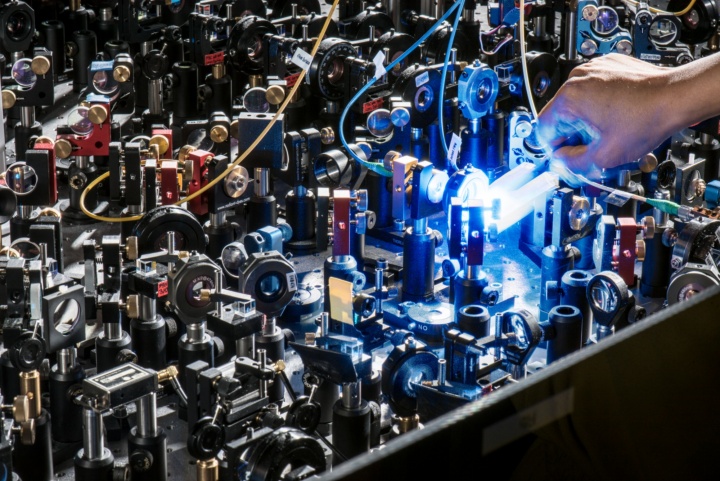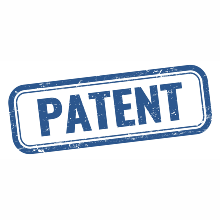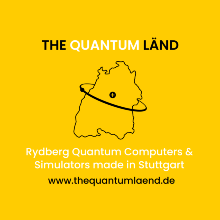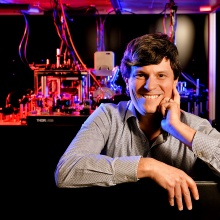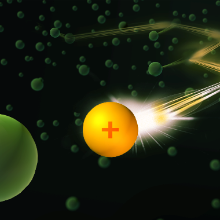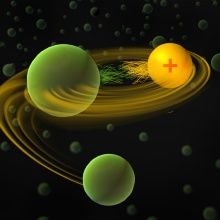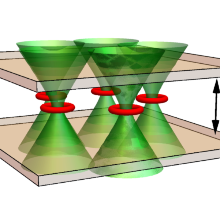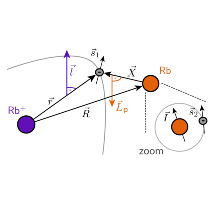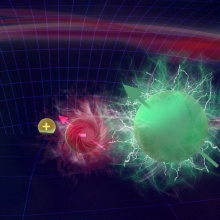Learn about...
The project
Laser-cooled Rydberg atoms have emerged as fascinating quantum objects with a multitude of applications in quantum science ranging from many-body physics over precision sensing to molecular physics and chemistry. Specifically, their extreme mutual interactions make them pristine candidates to study interacting quantum many-body systems in experimental settings where the atomic ensemble can be controlled and read out at the level of individual atoms.
So far, experiments have exploited Rydberg atoms for which the electron is prepared in orbitals with small angular momentum L. In this project, we aim to achieve control over Rydberg many-body systems in quantum states with the maximum angular momentum allowed by quantum mechanics, so called circular Rydberg states. Circular Rydberg states allow to achieve orders of magnitude longer quantum state lifetimes and thus promise exciting means to strongly boost coherence times for Rydberg-based quantum simulation platforms.
Individual control over these peculiar objects has already allowed for Nobel prize winning experiments on the fundamental quantum nature of light performed in atomic beam experiments. Here, we aim to extend this control to laser-cooled circular Rydberg atoms trapped in flexible optical micro-trap arrays. To this end, we will develop novel tools to create and control high-n interacting circular Rydberg atoms at the level of individual particles. With this at hand, we are specifically interested to exploit their exaggerated coherence properties for investigating many-body physics far from equilibrium and to study anomalous excitation dynamics and transport in extended quantum spin arrays.
Project Publications
2024
- M. Wirth, C. Hölzl, A. Götzelmann, E. Pultinevicius, F. Meinert, Quadrupole Coupling of Circular Rydberg Qubits to Inner Shell Excitations, Physical Review Letters 133 (2024), doi:10.1103/physrevlett.133.123403.
- C. Hölzl, A. Götzelmann, E. Pultinevicius, M. Wirth, F. Meinert, Long-Lived Circular Rydberg Qubits of Alkaline-Earth Atoms in Optical Tweezers, Phys. Rev. X 14, 21024 (2024).
- G. Unnikrishnan, P. Ilzhöfer, A. Scholz, C. Hölzl, A. Götzelmann, R. K. Gupta, J. Zhao, J. Krauter, S. Weber, N. Makki, H. P. Büchler, T. Pfau, F. Meinert, Coherent Control of the Fine-Structure Qubit in a Single Alkaline-Earth Atom, Physical Review Letters 132 (2024), doi:10.1103/physrevlett.132.150606.
2023
- C. Hölzl, A. Götzelmann, M. Wirth, M. S. Safronova, S. Weber, F. Meinert, Motional ground-state cooling of single atoms in state-dependent optical tweezers, Phys. Rev. Res. 5, 33093 (2023).
2022
- A. Pagano, S. Weber, D. Jaschke, T. Pfau, F. Meinert, S. Montangero, H. P. Büchler, Error budgeting for a controlled-phase gate with strontium-88 Rydberg atoms, Phys. Rev. Research 4, 33019 (2022).
- S. Tiwari, F. Engel, M. Wagner, R. Schmidt, F. Meinert, S. Wüster, Dynamics of atoms within atoms, New Journal of Physics 24, 73005 (2022).
2021
- C. Veit, N. Zuber, O. A. Herrera-Sancho, V. S. V. Anasuri, T. Schmid, F. Meinert, R. Löw, T. Pfau, Pulsed Ion Microscope to Probe Quantum Gases, Phys. Rev. X 11, 11036 (2021).
- T. Dieterle, M. Berngruber, C. Hölzl, R. Löw, K. Jachymski, T. Pfau, F. Meinert, Transport of a Single Cold Ion Immersed in a Bose-Einstein Condensate, Phys. Rev. Lett. 126, 33401 (2021).
2020
- K. Jachymski, F. Meinert, Vibrational Quenching of Weakly Bound Cold Molecular Ions Immersed in Their Parent Gas, applied sciences 10, 2371 (2020).
- M. J. Mark, S. Flannigan, F. Meinert, J. P. DIncao, A. J. Daley, H.-C. Nägerl, Interplay between coherent and dissipative dynamics of bosonic doublons in an optical lattice, Phys. Rev. Research 2, 43050 (2020).
- F. Meinert, C. Hölzl, M. A. Nebioglu, A. D’Arnese, P. Karl, M. Dressel, M. Scheffler, Indium tin oxide films meet circular Rydberg atoms: Prospects for novel quantum simulation schemes, Phys. Rev. Research 2, 23192 (2020).
- M. Deiß, S. Haze, J. Wolf, L. Wang, F. Meinert, C. Fey, F. Hummel, P. Schmelcher, J. Hecker Denschlag, Observation of spin-orbit-dependent electron scattering using long-range Rydberg molecules, Phys. Rev. Research 2, 13047 (2020).
- T. Dieterle, M. Berngruber, C. Hölzl, R. Löw, K. Jachymski, T. Pfau, F. Meinert, Inelastic collision dynamics of a single cold ion immersed in a Bose-Einstein condensate, Phys. Rev. A 102, 41301 (2020).
2019
- F. Engel, T. Dieterle, F. Hummel, C. Fey, P. Schmelcher, R. Löw, T. Pfau, F. Meinert, Precision Spectroscopy of Negative-Ion Resonances in Ultralong-Range Rydberg Molecules, Phys. Rev. Lett. 123, 73003 (2019).
We are looking for motivated new team members!
If you are interested in a master or bachelor thesis project in our team do not hesitate to contact us.
We are looking for a student assistant (Hiwi) to join our team. Your project will be dedicated to study the polarization characteristics of our optical tweezer array. For more information please contact Florian Meinert.
Salary: normal Hiwi salary per hour, hours per week and schedule upon individual arrangement.
Project Team
Project News
Contact
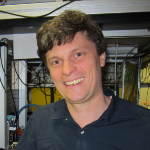
Florian Meinert
Group Leader


